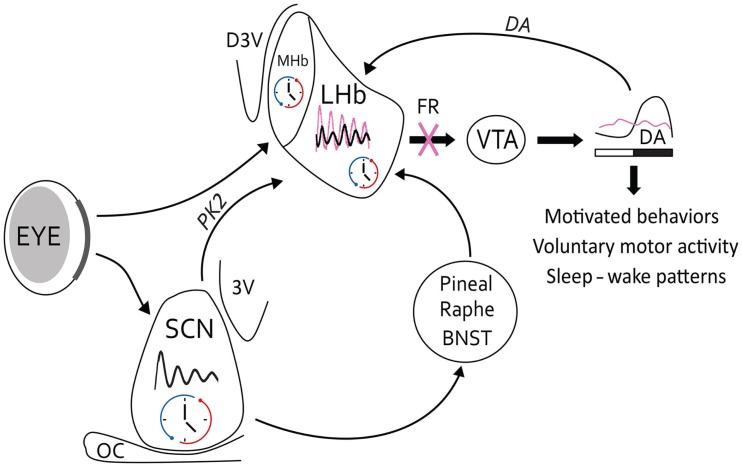Figure 2.
Circadian circuitry of LHb for the control of behavior. The circadian oscillator in the LHb may be affected by light information from retinal projections (in bold), which arrive at the border of the LHb. The main SCN clock contacts the LHb by a direct neural pathway in which PK2 is positioned as the main clock-output factor. However, possible indirect pathways via the pineal gland, raphe nuclei, or BNST may link the SCN to the LHb as well. The LHB modulates midbrain DA activity from the VTA, and reciprocally DA may affect LHb activity. Under normal conditions (black oscillation), this pathway may result in a circadian release of DA in the striatum and several behavioral outputs, such as motivated behavior, voluntary motor activity, or sleep–wake cycles. On the other hand, under acute cocaine conditions, circadian rhythms of the LHb may change in amplitude, phase, or period (pink oscillations), which can lead in modifications of the VTA activity. However, under chronic cocaine situations beyond changes in LHb oscillations, denervations of the FR (pink cross) may lead to a dysregulation in the DAergic system and related behavioral outputs. Thus, symptoms of addictive behaviors may appear due to loss of rhythmic control of LHb. 3V, ventral third ventricule; BNST, bed nucleus of the stria terminalis; D3V, dorsal third ventricule; OC, optic chiasma.

